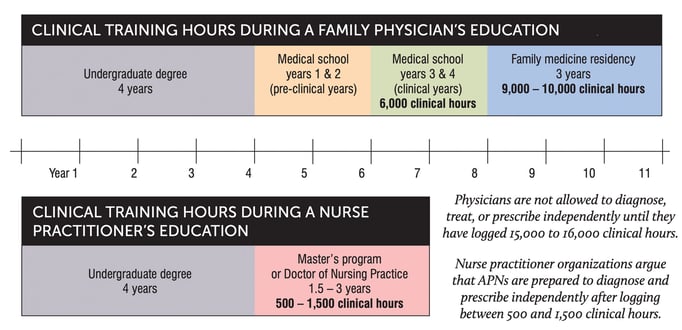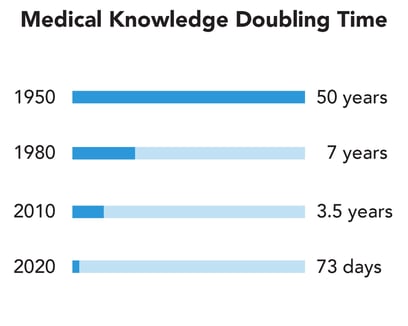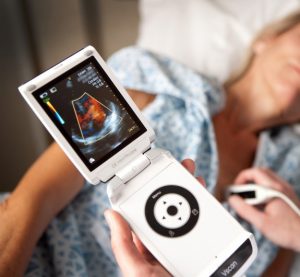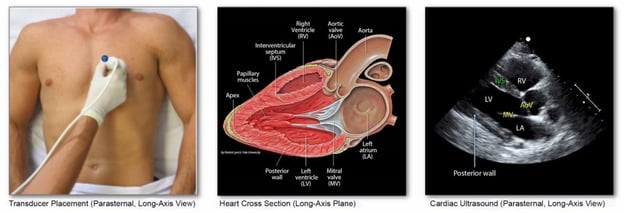A Progressively Competitive Landscape for Future Physicians

This is part one of a four-part series examining educational changes within medical schools
Medical school deans and faculty are under escalating pressure to deliver the transformative changes needed to provide today’s medical students with the foundational knowledge and skills required to deliver patient care in a progressively complex healthcare system. Medical school graduates enter a healthcare system in need of structural reform. Imperatives include improving access to healthcare, addressing structural healthcare inequities, focusing upon social determinants of health, and helping formulate a healthcare system that has long-term fiscal sustainability.
Today’s medical school and residency program graduates face a dynamic and progressively competitive work environment. Traditional tasks and roles reserved for physicians are being rapidly transitioned to advanced practice providers, such as physician assistants and nurse practitioners. The evolving role of advanced practice providers has been fueled by the need to address primary care workforce shortages, improve specialty care access, and reduce healthcare costs (Fenwick et al., Fraze et al., Mashlan et al., Rincon et al., Sarzynski & Barry).
The differences in duration of education and clinical training before obtaining a license to engage in the independent care of patients, between physicians and advanced practice providers, are striking (Shaffer et al.). For example, a Family Medicine physician will undergo approximately 20,700 to 21,700 total hours of training versus 2,800 to 5,350 hours of training for a nurse practitioner with a doctorate (Figure 1). Medical educators will be progressively challenged to ensure that the thousands of extra hours of training medical student members and residents undergo directly translate to valuable knowledge and marketable skills that lead to improved patient care.

Adapted from Ramas ME. 2011. The Question of Independent Diagnosis and Prescriptive Authority for Advanced Practice Registered Nurses in Texas: Is the Reward Worth the Risk? Retrieved on November 5th, 2020 from Texas Academy of Family Physicians (TAFP). Figure 1.
Concurrently, scientific breakthroughs across medical disciplines are straining the capacity of educational institutions to translate recent advances into medical education. It is estimated that the doubling time for the corpus of medical knowledge was 50 years in 1950; 7 years in 1980; 3 ½ years in 2010; and is now 73 days in 2020 (Figure 2). This has created a perpetual “knowledge and skills gap between what people know at one moment and what they will need to know at the next moment to be successful in their everyday lives and the workplace” (O’Mahony et al.).

Adapted from Densen P. Challenges and Opportunities Facing Medical Education. Transactions of the American Clinical and Climatological Association. 2011;122:48-58. Figure 2.
Undergraduate Medical Education in the 21st Century
Many undergraduate medical education institutions are revising their curricula to align with today’s educational priorities. The widespread availability of online reference sources and decision support tools has minimized the need for rote memorization of many items. Supervising (attending) physicians are more often looked to for “experienced guidance” by today’s trainees, rather than as a primary source of clinical knowledge. Medical educators need to ensure students have a solid foundation of knowledge by emphasizing the principles of pathologic diseases, the essentials of patient care, and how to critically interpret medical literature to support lifelong learning. Medical school graduates need to obtain the foundation of medical knowledge required to efficiently function, but also need to develop the ability to devise solutions for future workplace challenges (Mylopoulos et al.).
Continued advances in genomic medicine, bioinformatics, data science, and other disciplines, combined with the progressive integration of artificial intelligence (AI) will require an ongoing re-examination of educational priorities. Medical educators are currently exploring pathways to formulate a dynamic undergraduate medical education curriculum, irrespective of curricular format (e.g., discipline-based, organ-based, complaint-based, or interwoven).
Traditional time-based approaches to medical education need to transition to competency-based education and the development of “master adaptive learners” needs to be fostered (Branzetti et al., Cutrer et al., Mylopoulos et al., Scott et al., Sharma et al.). Leveraging evolving third-party educational platforms that enable personalized, learning approaches will tailor teaching to individual learner requirements and improve learning efficacy. Medical educators can now access a robust suite of simulation solutions to train students on how to respond to a variety of clinical scenarios and how to execute a variety of medical procedures. Creating tight feedback loops between academic institutions and simulation companies will enable innovators to continue to iterate based on constructive feedback and provide improved simulation products.
Enhancing Patient Care Through Diagnostic Imaging
To improve patient care, medical school graduates will need to know how to optimally apply advanced diagnostic imaging. The initial assessment, evaluation, timely management, and appropriate disposition of the “undifferentiated patient” are critically important. Classification of a patient’s presenting complaint will often trigger a well-defined response (e.g., code STEMI, code Trauma, code Stroke) by a multidisciplinary team of specialists focused on a specific medical condition. Diagnostic imaging very often plays a critical role in this process. An incorrect initial diagnosis or misclassification may result in a cascade of tests or interventions that delay or compromise patient care.
Undergraduate medical educators are at a critical crossroads and have a unique opportunity and important responsibility for preparing today’s medical students for tomorrow’s challenges. How can medical school educators optimally prepare medical students for this dynamic and progressively competitive landscape? What are the most useful clinical skills that will help graduates provide improved patient care today and in the future?
The ability to precisely assess, evaluate, and manage patients is an essential core skill set for today’s medical school graduates and will remain so into the future. Medical educators continuously decide which novel elements to integrate into existing curricula designed to empower medical students with the aforementioned core skills.
The Benefits of Point-of-Care Ultrasound
Recent advances in ultrasound technology provide both medical educators and students with an exciting new opportunity to improve patient care. Higher fidelity, lower cost, and smaller handheld ultrasound units coupled with innovative ultrasound training, have created a tremendous opportunity to improve patient care today and into the future. Point-of-care ultrasound a.k.a bedside ultrasound refers to the use of portable ultrasonography at a patient’s bedside for diagnostic (e.g., symptom or sign-based examination) and therapeutic (e.g., image-guidance) purposes. Bedside ultrasound can provide real-time information regarding a variety of body organs and systems that can complement the physical examination.

Portable ultrasound machines, such as the GE Vscan, allow immediate diagnosis at a patient’s bedside.
Research demonstrates that bedside ultrasonography helps trained operators save lives and improve patient care by making real-time diagnoses at a patient’s bedside, tracking physiologic parameters, and improving needle-based procedure success rates (Bansal et al., Barnes et al., Bassler et al., Kimberly et al., Kirkpatrick et al., Kuhn et al.). Ultrasound cost-effectively accomplishes these objectives without relying on potentially harmful ionizing radiation associated with X-rays and CT scans.
|
Characteristics of Point-of-Care Ultrasound
|
|
Exam is for a well-defined purpose linked to improving patient outcomes
|
|
Exam is focused & goal-directed
|
|
Exam is easily learned & findings are easily recognizable
|
|
Exam is performed quickly at the patient’s bedside
|
Adapted from: Kendall JL, Hoffenberg SR, Smith RS. History of emergency and critical care ultrasound: the evolution of a new imaging paradigm. Crit Care Med 2007 May;35(5 Suppl):S126- S130.
Another major benefit of learning point-of-care ultrasound is that it provides medical students the opportunity to apply anatomic knowledge acquired during preclinical training, toward patient care daily. Medical students need to understand how to integrate ultrasound findings into medical decision-making. This involves synthesizing elements of a patient’s history and physical examination and using ultrasound findings to narrow down the differential diagnosis or help classify a patient’s presenting complaints.

Performance of cardiac ultrasound.
Bedside Ultrasound is an Operator Dependent Skill
Ultrasound is only as useful as the user’s ability to obtain an ultrasound image, interpret it, and apply the findings to medical care. Training is the key. Technological advances in ultrasound hardware have been matched by novel ultrasound training technology that has overcome historical barriers to ultrasound adoption (Chung et al., Gottlieb et al., Maw et al., Monti & Perreault, Paddock et al.). Advances in medical simulation have resulted in novel ultrasound teaching and assessment tools that help train and assess how well learners acquire, interpret, and apply ultrasound findings toward medical decision-making (Liteplo et al., Rebel et al., Rowley et al., Tayal et al.).
The integration of bedside ultrasound into undergraduate medical education provides medical students with valuable anatomic knowledge and an enduring, marketable skill set that will improve healthcare outcomes. This represents one of the many elements medical educators are seeking to impart to medical school graduates, which will help them continue to learn, adapt, and thrive in the future.